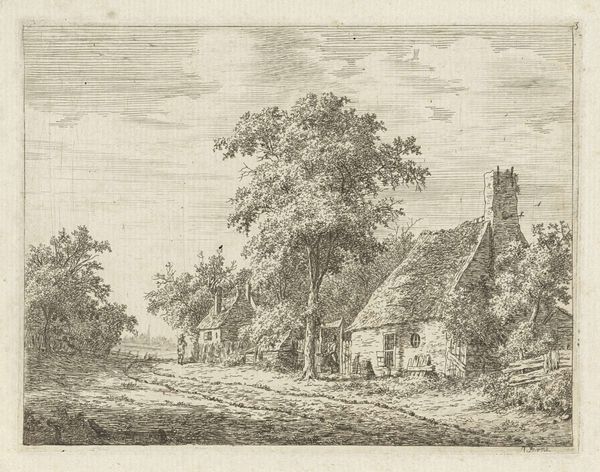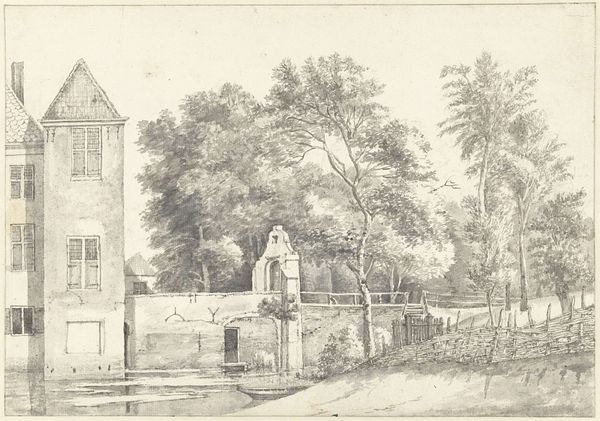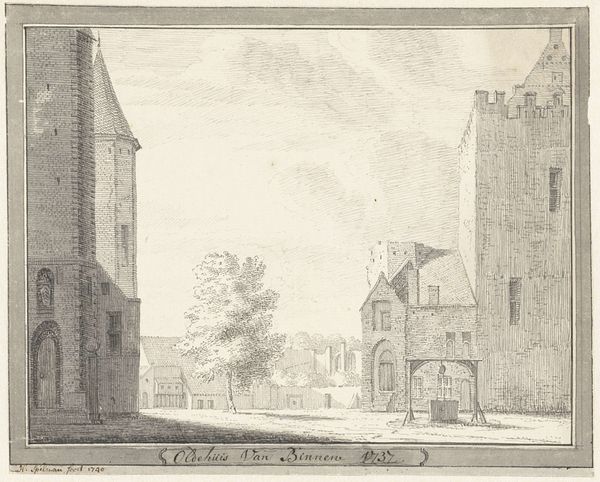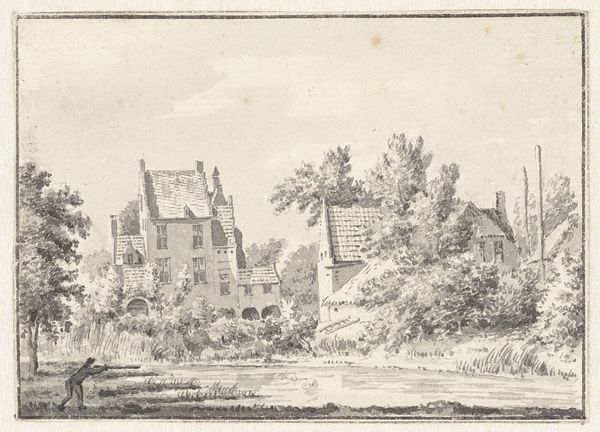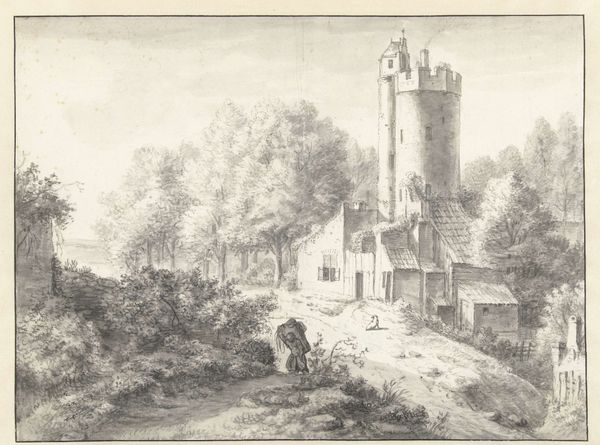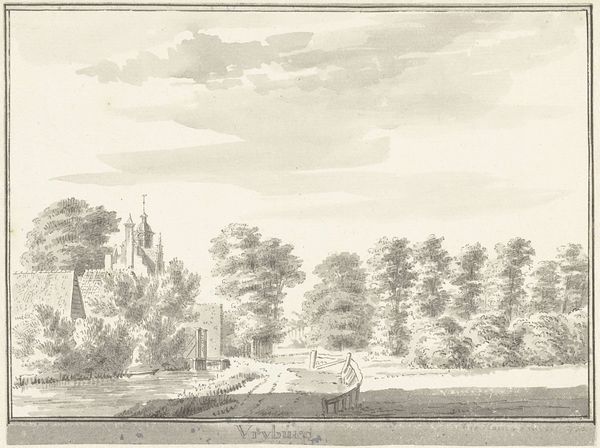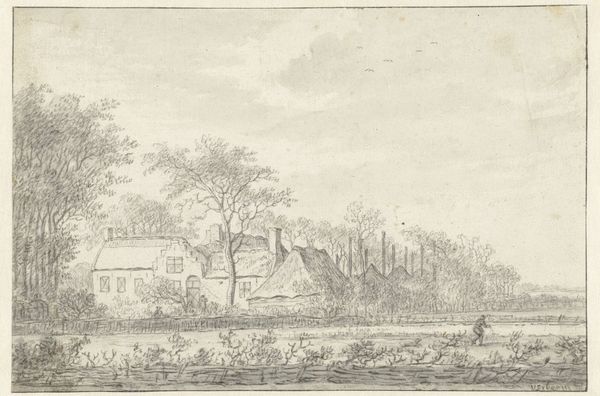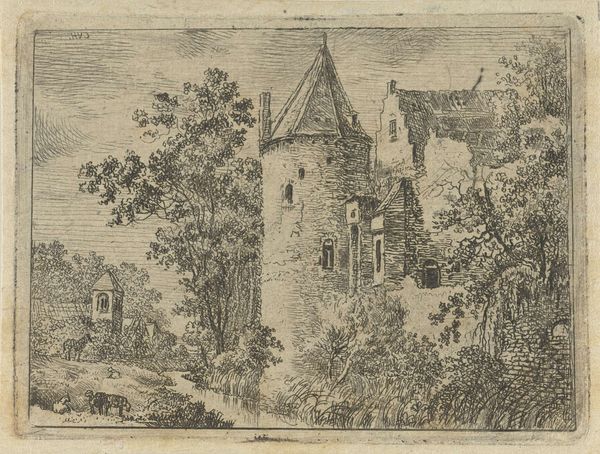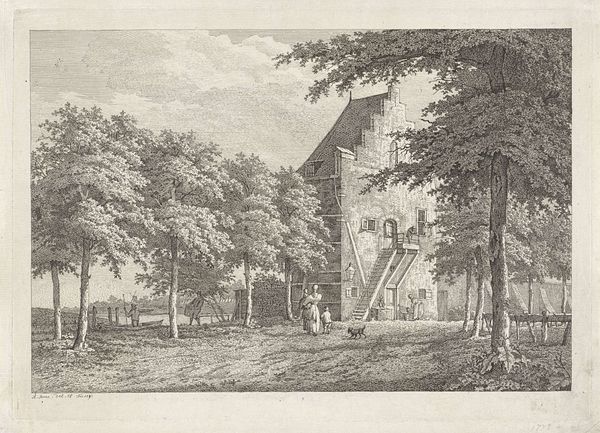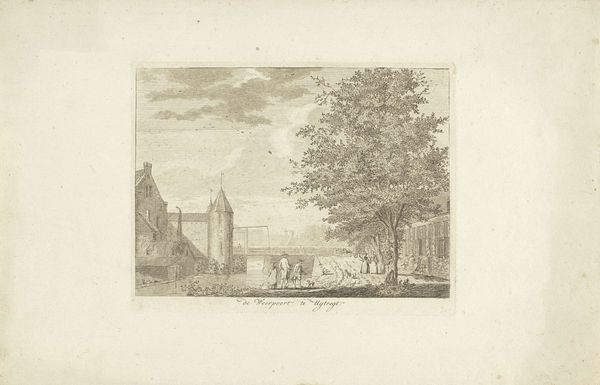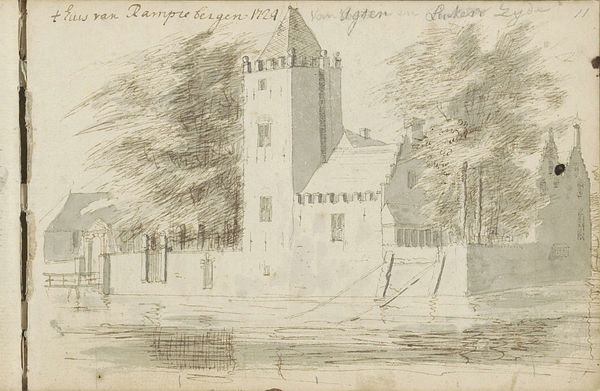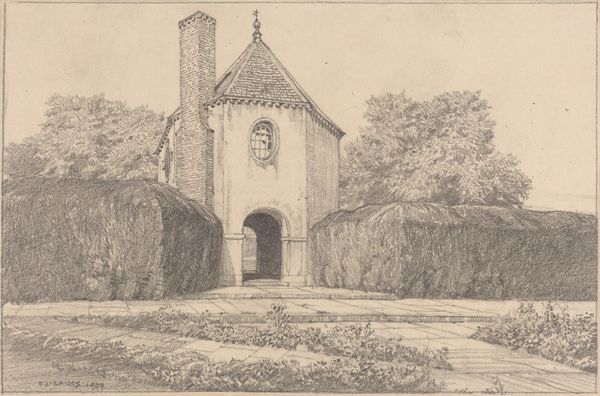
drawing, paper, ink, pencil
#
drawing
#
quirky sketch
#
dutch-golden-age
#
pen sketch
#
old engraving style
#
landscape
#
paper
#
personal sketchbook
#
ink
#
sketchwork
#
pen-ink sketch
#
pencil
#
pen work
#
sketchbook drawing
#
genre-painting
#
storyboard and sketchbook work
#
sketchbook art
Dimensions: height 123 mm, width 160 mm
Copyright: Rijks Museum: Open Domain
Curator: Jan de Beijer, likely between 1750 and 1759, gives us "Het Huis te Vleuten," rendered in pencil, pen, and ink on paper. Quite a medley of mark-making! What's your initial take? Editor: Dreamy, almost melancholic. There’s a ghostly quality to it, like a memory fading at the edges. The house, or maybe it's more of a fortified tower, sits quite rigidly amidst the surrounding nature. I'm wondering about the intended contrast between order and wilderness. Curator: Yes! De Beijer has really captured that sense of the imposing architecture amidst the organic growth, hasn't he? The architectural elements offer rigid horizontals and verticals, while the trees behind melt and blend in the soft, wavering strokes of ink. It almost seems the artist has placed the trees into strategic spots to highlight—or maybe shadow—aspects of the house. Editor: Absolutely. Thinking about the era this was made, it's easy to fall into considerations around privilege and land ownership. The estate, this Huis te Vleuten, embodies a specific class identity and the power structures of 18th century Netherlands. There's a statement being made about humanity's control and demarcation of the natural world. Curator: I never considered that angle before but it opens the reading for sure. It is a lovely landscape in and of itself—even serene! Do you suppose it captures the site faithfully, or is he romanticizing it somehow? The drawing is detailed, yet something in me feels that the house wants to be a castle in a fairytale instead. Editor: Well, that kind of leads into another thought: landscape art served as both documentation and propaganda, particularly within colonial contexts, where accurate landscapes helped fuel exploitation and conquest of other lands. Even here, in a European setting, landscape drawings played a role in the circulation of wealth and power. They romanticized the pastoral lifestyle that was accessible to the powerful elite. Curator: Always grounding, aren’t you? No escaping power, is there? Even in a humble drawing like this, in which the line seems so fragile. The marks appear and disappear across the paper, like hesitations and afterthoughts caught in ink and lead. Editor: I mean, in the very texture of the artwork there’s power at play! Pen and ink sketches such as this offered those with particular forms of privilege the chance to depict—and essentially own—visual representations of not just land but life. To put it another way, who has access and what they represent matters! Thanks for walking with me along this train of thought, Curator! Curator: The pleasure’s all mine. Thank you for shading this lovely sketch with broader, often harsher strokes. Makes me feel alive to the many tensions!
Comments
No comments
Be the first to comment and join the conversation on the ultimate creative platform.

